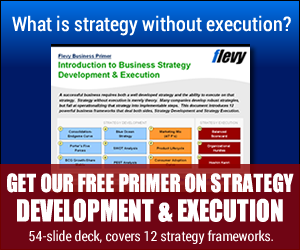The Agile Manifesto provides four values and twelve principles as foundational to an agile mindset. This post focuses on the four values, and their impacts on project management and strategic thinking.
Value 1: Individuals and interactions over processes and tools

People are our most precious resource, and in the end will be the reason for success or failure. But things are complicated…!
People need to communicate. In setting up a project for success, one of the cornerstones in the Project Management Institute’s (PMI) Body of Knowledge (PMBOK) is the plan for the communication needed on the project. A communication plan is just what is needed in order for the project to be executed in an agile fashion.
Structuring communications to facilitate effective interaction among people involves many considerations. Here are a few that come top of mind:
- Location – What location(s) will work best for people? How can you accommodate different possibilities, realities, and preferences?
- Formal meetings – What meetings do you really need? What degree of formality? How about scheduled vs impromptu?
- Communication channels – What will people embrace? Email, chat, online meetings, in person formally an informally? What will people use the most?
- Roles and organization structure – Loose structures can produce more communications, but well-defined roles can produce greater efficiency and more effective decision-making. What level of structure do you need?
- Documentation of decisions – People can drift in different directions without the same understanding. Decisions are sometimes unclear in everyone’s minds…and memories can play tricks. Efficient documentation of the most important points is important, and an easy way for people to access them is just as important.
The important thing is to set up an initial structure at the beginning of the project and monitor how it is working, and adjust accordingly.
Thinking strategically – and developing strategies – also can benefit from some level of agile mindset. The trick is striking the balance.
- Who decides what? – At what level are decisions made? The most strategic decisions are made at the highest levels, but most decisions – within strategic parameters – are made day-to-day at lower levels.
- What is permanent…and what will change? – Something needs to be foundational…but what is it? What is the platform that people with work from?
- How is strategy monitored…and the need for a pivot identified? – What are the triggers? At what points do we measure? Who measures? How do they communicate findings, and to whom?
Processes and tools are important, but the second value of the Agile Manifesto says to favor individuals and interactions.
Value 2: Working software over comprehensive documentation
This second value specifies ‘software’, but I think is can be applied to just about anything. In fact, I think that non-software projects can benefit from the thinking and approaches that have evolved from software development.
From a project management execution perspective, the idea is to deliver early and often. While planning is important, the end goal is to actually deliver results. It is easier to deliver value incrementally, balancing planning and execution along the way.
Here are some PM-centric thoughts on this:
- Building confidence from the customer – Delivering early and often builds not only value, but confidence on the part of the customer to continue the process.
- Defining deliverables – To deliver early and often, deliverables need to be defined in small chunks where you are reasonably confident will bring clear value.
- Progressive elaboration – How much do you know up front? Can you segment what you do and do not know? Can you build to what you know…and leave room to define what you don’t know later, when it becomes clearer what is needed?
—————————————-
I recommend these PM templates (paid link):
—————————————-
From a strategic mindset, here are some things to consider:
- How detailed a vision? – Leave room for clarifying the vision details at the implementation/execution level.
- Live to see another day – The grand vision can only come to be if you survive implementation steps long the way. That means having successes – often revenue producing successes – on the way to each plateau leading to the grand vision.
- Keep the customer first – Delivering value at each step is always based on keeping the customer first – in delivering value to them.
An agile mindset can be applied to almost any endeavor – not just software development.
Document your thoughts to creatively to add value – not to add dead weight to the project.
Value 3: Customer collaboration over contract negotiation
Balancing structure and personalization is key here. There is some structure needed…and structure is necessary to frame the actions and to protect the downside.
In leveraging an agile mindset for better project execution, here are a few considerations for engaging most effectively with customers:
- Provide structure – Defining needs with customers requires some structure. You are helping them to organize their thoughts! Discovery requires some structure; helping to frame the discussion provides the space and impetus to ask the right questions.
- Lead the way through the process – Keep in mind contract related risk…but otherwise move toward solutions that the customer needs. Help the customer through the discovery process, with which they may not be so familiar.
- Collaborate on the definition of “done” – Clarity on completion can help avoid a lot of issues that a contract cannot. Work toward a common shared understanding of the final product, and what everything will look like when it is finished.
Thinking strategically, here are a few questions to ask:
- What is the basis for the strategy? – Are the assumptions correct? It is good to come back to this question. Facilitate an attitude among contributors for doing the right thing vs being right.
- Is the customer the driver? – Come back often to the question of where the strategy is originating. Is the customer’s desire being satisfied…or that of someone else?
- Can the strategy survive customer collaboration? – Allow – encourage – others to poke holes in the strategy. The strategy is only good if it survives a high level of scrutiny by the customer.
Indeed, contracts are needed…but they need to be flexible and tailored to the situation. There are many different types of contracts…
Value 4: Responding to change over following a plan
What is more important: adhering to the plan or responding to evolving considerations? Where you are on the continuum will depend on the specific needs and characteristics of the project.
There is no fixed answer on this; it depends on the situation.
The Agile Manifesto applies especially to software projects, where there is a high propensity to change. However, the lessons from software can be applied elsewhere.
—————————————-
I recommend these strategy resources (paid link):
—————————————-
Here are some thoughts on contrast:
- Constructing a building – You cannot change the foundation of a building once it is in place – or easily change windows or other items without great expense! However, you can model things before construction, and be very agile about that. And you can go about it with an agile mindset, planning for change…so that you build things with needed flexibility.
- Constructing software – Software, by contrast, is very flexible throughout the process, although not entirely. That’s why it is good to create value as soon as possible; implement something in a short time that has value to lock in short term wins operationally and financially.
While planning is a must, keeping plans simple, and then monitoring and adjusting, tends to work better the more conditions change.
Conclusion and further resources
This post focused on the impacts on project management and strategic thinking of the four values outlined in the Agile Manifesto. Most important to recognize is that these values contrast what to favor and what to emphasize less.
For a good 2-minute overview video of the 4 values of the Agile Manifesto, I recommend:


